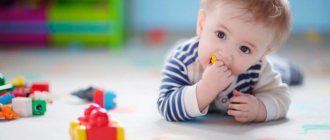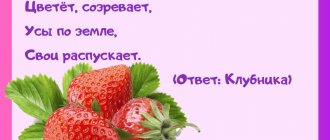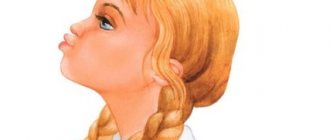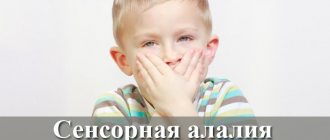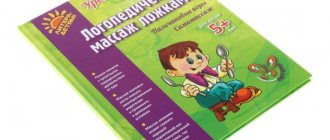Stuttering in children is a disorder of the tempo-rhythmic aspect of speech, caused by repeated convulsions in the articulatory, vocal or respiratory parts of the speech apparatus. Stuttering in children is characterized by “getting stuck” on individual sounds, their repeated, involuntary repetition, accompanying movements, and vegetative reactions. The term has several synonyms: logoneurosis, logoclonia, laloneurosis.
In children, one can often observe so-called physiological iterations, which manifest themselves in hesitations and children’s repetition of certain sounds and syllables. The reasons for this disorder may be insufficient development of the tempo-rhythmic side of oral speech, disruption of the functional activity of the auditory, speech and motor analyzers. If a child has a weak nervous system and there are other unfavorable factors, then physiological repetitions can become persistent and develop into stuttering.
There are more boys than girls among children who stutter. This is due to the structure of the hemispheres. The hemisphere in girls is organized in such a way that the left hemisphere works better than the right.
Basically, stuttering in children begins between 3-5 years of age - at this stage, speech develops in the most active way, but since the speech function may not be fully formed, various kinds of speech pathologies may arise.
general information
The main purpose of massage for stuttering is a mechanical effect on the condition of muscles, nerves, and blood vessels. Conducted by a speech therapist, probes are used if necessary.
Logomassage is part of complex therapy. In other words, it cannot be a panacea, but it can improve the child’s condition.
Children begin to stutter for various reasons. Scientists believe that it’s all about a combination of genetic and neurological factors. A predisposing factor is muscle hypertonicity. In adults, the disease appears after concussion, head injury, or stroke.
Massage can be used both in a special institution and at home. But before using it, doctors check the patient. The procedure has contraindications. The exposure is carried out in courses with a short break between them.
Massage helps to relax the muscles - vocal, articulatory, regulating the breathing process. The child’s mental state normalizes. Metabolism increases and blood circulation improves. Against this background, there is a decrease in the manifestations of stuttering.
Forecast
Stuttering in children usually goes away completely if treatment and recreational therapy is organized correctly. Sometimes relapses may occur during school and puberty.
Of course, overcoming stuttering depends on many conditions, primarily on its mechanisms, on the timing of the onset of complex influence and the completeness of its application, as well as on the age of the child. If stuttering develops due to congenital complications or acquired as a result of previous illnesses, the prognosis is less favorable. In most cases, the prognosis for stuttering is favorable and social adaptation of stutterers is achieved to a fairly high degree.
Types of massage
The classification and sets of exercises were developed by Dyakova. She identified the following types of massage:
- point;
- probe;
- segmental.
Each requires the use of certain techniques. They affect the area of the neck, shoulders, and head. The specialist must have a good understanding of human anatomy and physiology and know the location of the cranial nerves.
For stuttering, acupressure and segmental massage are most often used. Sometimes a combination of them is effective.
For probe massage, special instruments are used - probes. They allow you to relieve hypertension or activate muscles.
The method of influence should not be perceived as a panacea. This is only additional help in case of a defect, but if you use only it alone, there will be no result.
Contraindications for use
Any massage techniques activate brain centers, which can cause a deterioration in the patient’s condition in the presence of additional pathologies, chronic and infectious diseases. Contraindications to massage manipulations:
- pneumonia, viral diseases, otitis media, tonsillitis;
- blood diseases;
- oncology;
- skin damage;
- allergic skin rashes;
- gag reflex;
- temperature;
- inflammation of the lymph nodes.
Indications and contraindications
Speech therapy massage for stuttering is prescribed for any problems with muscle tone. During convulsions, they may become excessively compressed, tense, and it will be difficult for the child to return them to normal.
Relaxation plays an important role in the correction of stuttering. It is not easy to teach a patient to relax. Massage has this effect. If it is manual, it brings additional pleasant sensations.
Before the course, the speech therapist conducts diagnostics. He looks at the condition of articulatory and facial muscles. Checks the condition of the neck and shoulders. Draws attention to:
- asymmetry;
- skin rashes;
- skin color;
- hemorrhages.
After which palpation is carried out, that is, palpation. The speech therapist touches areas of the body with his fingers - this allows you to better feel the condition of the muscles. A similar examination is carried out in adults.
An absolute contraindication is epilepsy. Additional exposure may trigger seizures. Temporary relief is somatic diseases, injuries, inflammations.
The benefits of massage for stuttering
A special massage of the head, cervical region, collar area, back, chest and shoulders has a positive effect on articulation. The benefits of this procedure are visible after several sessions, but sometimes 1-2 courses of treatment are required.
The advantages of massage for logoneurosis are:
- activation of metabolic processes in the body;
- increase or decrease in muscle tone;
- improving blood circulation;
- increased metabolism;
- formation of correct speech skills;
- prevention of disease relapse;
- complete elimination or minimization of speech defects.
The procedure has no contraindications, and having mastered the correct massage technique, parents will be able to do it to their child at home.
Requirements for conducting
Before starting to relax the patient, the specialist must prepare the room. The office is washed, ventilated, and made cozy. The child should not create associations with the medical institution, as this will cause a negative reaction.
On average, procedures are carried out every other day. The usual course duration is 20 procedures. After which they take a break for a month, and the cycle is repeated again.
In childhood, they begin with short sessions of five minutes, gradually increasing the duration to half an hour. In adults, the same scheme is used. The child should not experience pain. Some effects may be unpleasant, but not cause acute discomfort.
It is advisable for the speech therapist to wear a sterile mask. The specialist’s hands should be clean, warm, with short-cut nails. Before starting, lightly lubricate the skin with oil or powder.
The optimal position is for a stuttering child to lie with his back on a flat couch. This position is convenient for the speech therapist and frees breathing. In some cases, a half-sitting position in a chair is allowed, with the child’s head thrown back on the headrest.
Sometimes it is convenient for a specialist to stand not behind the patient’s head, but on the right side of him. In this position it is easier for him to secure the child.
Symptoms of stuttering in children.
External manifestations of a speech defect may differ depending on the causes and severity of logoneurosis. But in almost all cases there are some common signs:
- Hesitations in speech and long pauses between words, syllables and letters.
- Speech spasms are clonic, tonic, mixed. The occurrence of clonic seizures is most often observed at the beginning of the formation of logoneurosis. Characterized by repetition of the first letters or syllables in words.
- Impaired breathing rate. The breathing patterns of children who stutter are always shallow and intermittent.
- Distortion in speech intonation. The presence of spasms and hesitations often lead to intonation disorders in the child’s speech.
- Monotonous, inexpressive, unemotional speech.
- Cramps and spasms during pronunciation most often occur at the beginning or middle of a word.
- Prolonged pauses between sounds in the middle of a word, prolongation of the sound.
- Nervous tics when pronouncing.
- Sleep disturbances, nocturnal enuresis, disturbances in appetite and digestion.
Associated symptoms of stuttering include:
- increased anxiety;
- obsessive anxiety;
- motor and speech tics;
- spasticity of the facial muscles.
The presence of all these manifestations causes avoidant behavior in the child - he tries to avoid situations where it is necessary to speak out.
Basic Techniques
Each session begins with stroking. It is alternated with other techniques, but it is always completed with this technique. It can be superficial - the brush lightly touches the skin, gently and affectionately, with a deep grasping movement it affects the skin receptors and the nervous system. The palm is pressed firmly against the area and glides along the anatomical contours.
Stroking the “rake” - the fingers are spread wide, the pads actively massage the area of pressure. Performed in a circle, zigzag, wavy.
Rubbing involves applying strong pressure to a small area of muscle. It is performed both with the fingertips and the entire palm. The degree of impact is determined individually. Directions are spiral and straight.
Kneading - the fabric is gently rubbed, squeezed, compressed. Used in a small area. Perform with fingertips; in rare cases, pinching is allowed.
Vibration is created by lightly tapping your fingers on the surface of the muscles. Used in areas with minimal fat and where cranial nerves exit. Firm pressure allows you to target biologically active points (BAP).
The help from speech therapy massage will only be felt if the sessions are regular and the specialist is highly qualified. The choice of techniques depends on muscle tone and pathological features.
Causes of stuttering
There can be several reasons for stuttering:
- internal reasons;
- external reasons.
Internal reasons include:
- the nervous system of parents is passed on to their children, namely: if a parent has a fast rate of speech or, on the contrary, stutters, there is a possibility that this will be passed on to the child;
- the state of the nervous system and the child’s brain functions, which are responsible for speech, can be negatively affected by pathologies during pregnancy;
- organic lesions of the nervous system due to traumatic brain injuries, neuroinfections;
- diseases of the speech organs, namely the throat, larynx, nose.
External reasons include:
- The child’s body is very sensitive to external factors, especially in the period up to 5 years! But again, there must be a predisposition, a certain type of nervous system that will not withstand certain loads and stress. We must remember that you should not subject your child’s body to serious stress and stress!
- stuttering can appear when a child’s body experiences dissonance, for example: a left-handed child is retrained to be right-handed. PS “According to the World Health Organization, about 60 - 70% of retrained left-handers stutter”;
- a child should not be allowed to imitate a person who stutters;
- If a child lacks parental attention at the time of his speech formation, then problems may arise.
Segmental massage
Relaxing massage of the orbicularis oculi and lip muscles
Its goal is to target one specific area of muscle. Requirements for conducting are standard. The speech therapist's hands should not have abrasions, scratches, or wounds. All rings, bracelets, watches are removed. Fingers are lubricated with baby cream. Areas of influence are determined after diagnosis.
Before starting the session, it is useful to take a moment of relaxation. The patient is encouraged to relax and is asked to imagine being in a comfortable place. Once he has calmed down and is breathing evenly, you can begin to act.
The optimal position is lying on your back. All types of stroking are used, starting with a gentle effect. Palms gently touch the face, neck, shoulders. They move gently from bottom to top. Gradually the impact becomes stronger, the pressure increases slightly.
Rubbing is intended to stimulate blood circulation. Therefore, the speech therapist identifies problem areas (pale skin) and begins to actively rub them. It is better to do this in circular movements, as they are more comfortable.
The degree of vibration depends on the condition of the muscles. With hypotonicity, it should be strong, sensitive, palpable. With hypertonicity, on the contrary, it is barely noticeable.
The effect of logomassage will only be achieved if a set of techniques is implemented. Separately they are useless.
Finish with gentle stroking. Then the patient is allowed to lie down for a few minutes.
Purpose of the procedure
Massage for stuttering in children is needed to improve blood circulation in the brain structures responsible for the motor reactions of the speech apparatus. The effect of the procedure can be noted after the first sessions.
Impact goals:
- improvement of muscle tone of the larynx, pharynx, tongue, facial structures; preparation of articulation;
- elimination of increased salivation;
- inclusion of partially atrophied muscles in the work process;
- stimulation of Wernicke's and Broca's centers in the central nervous system, which regulate coherent, detailed phrasal speech;
- relaxation to reduce anxiety.
Scientists have established a connection between stuttering, osteopathy and massage. The technique of influencing the nerve endings that are located under the skin relieves spasms of the nerve centers in the brain. By mechanically influencing skin receptors, it is possible to improve metabolism, which helps drain lymph and enrich the blood with oxygen. Nerve centers transmit the relaxation impulse to the central nervous system.
By improving metabolic processes, the baby eats and sleeps better, feels more energetic, and is less capricious.
Acupressure
The difficulty of carrying it out is that it is necessary to correctly determine the localization of BAP (active points). With increased tone, a relaxing effect is used. It is aimed at reducing tension. The location of the BAP is best studied using an illustration or under the supervision of experienced specialists.
Massage of biologically active points
It’s simple: the finger rotates clockwise over the pressed area for 6 seconds. Gradually it seems to deepen, increase the force, then it is fixed for 2 seconds and the action is weakened in 5 seconds.
The pressure decreases counterclockwise. Without lifting your finger, this cycle is repeated 3-4 times. It takes about 1 minute to complete one point.
When tone is reduced, another technique is used - stimulating. The finger presses on the point clockwise for 6 seconds, and then the pad suddenly comes off. The movement is repeated up to 10 times.
In the first session, a maximum of 4 points are affected. Gradually the quantity is increased. In one procedure, general and local points are affected. Symmetrical points are massaged simultaneously.
It is advisable to combine acupressure massage with classical massage. It is better to conduct it before a session with a speech therapist. This way the child will be relaxed and the exercises will be easier for him.
Prevention:
Stuttering can be prevented by creating a calm environment. Eliminating factors that can provoke stuttering attacks. Creating a favorable, calm environment. Lack of criticism regarding the child’s speech impediment.
General recommendations for the prevention of logoneurosis in children from 3 to 5 years old
- If a speech defect is detected in a child, you should protect him from anything that can cause emotional stress, including prolonged watching of TV.
- Play classical, relaxing music for your child - its healing effect has long been recognized even by official medicine. The music of Mozart, Beethoven, Grieg, and Chopin has a particularly beneficial effect on the children's psyche.
- You should not rely only on your own strength. Do not hesitate to contact specialists; the faster you can overcome a child’s stuttering, the easier it will be for him to communicate, learn, and explore the world.
- Classes with the child should be systematic. You can't take long breaks.
- Ensure your child sleeps at least 8 hours a day (daytime naps if necessary), and exclude active and computer games in the evening. Limit your time watching cartoons. Thus, the overstrain of the central parts of speech will be reduced.
- Organize proper communication. Talk to your baby calmly, slowly and smoothly, pronouncing all the words. When communicating with your child, try to use questions whose answers are simple and monosyllabic. If your child finds it difficult to pronounce a phrase on his own, say it together.
- Watch your diet. Vegetable and dairy foods should predominate in the diet. You should limit chocolate, sweets, spicy, salty and fried foods.
- Prevention of stuttering in neurologically and mentally healthy children is quite simple and consists of good family relationships. Where there are no conflicts, quarrels, and there is love and understanding, the child has much less risk of becoming a stutterer. Curing stuttering is much more difficult than preventing it. A child’s stuttering sometimes manifests itself so that parents understand their own mistakes.
- You cannot stop stuttering, you can only help, establish mutual understanding and cooperation with the child. And remember that love and faith in the baby’s abilities creates real miracles that even traditional medicine is not always able to explain. Believe in your child and he will succeed.
Self-massage
A specialist can teach children self-massage skills. This doesn't require much effort. Preschoolers are taught in front of a mirror, shown an example of an action and asked to repeat:
- The first exercise is to gently stroke your cheeks with your palms, working from your nose to your ears. You can stroke the head, going lower from the hair.
- The second exercise is to run your fingers with pressure from the middle of the forehead to the temples, as if drawing paths. You can draw a “Christmas tree”.
- The third exercise is tapping the forehead and cheeks with pads. There may be more exercises. The complex is compiled by a speech therapist based on the individual characteristics of the child.
Krupenchuk has her own method. She improved the Dyakova complex. Regular spoons are used for massage - this is perceived more positively by the child.
The process can be combined with games. In this case, it will be more interesting for children to complete the tasks of the speech therapist. As an incentive, you can give a sticker or the opportunity to choose a game.

